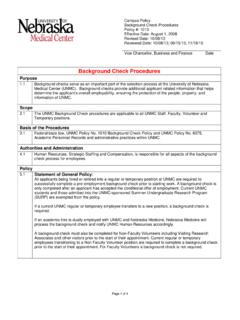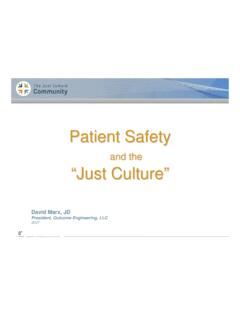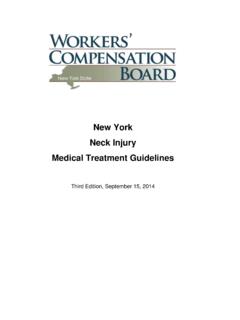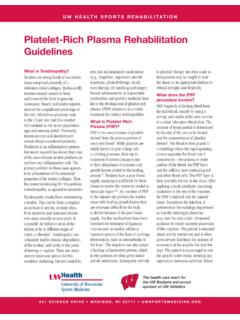Transcription of Skin and Soft Tissue Infections: Treatment Guidance
1 Skin and Soft Tissue Infections: Treatment Guidance Updated May 2018 Jasmine R Marcelin MD, Trevor Van Schooneveld MD, Scott Bergman PharmD Reviewed by: Mark E Rupp MD, M. Salman Ashraf MBBS The Treatment of Skin/Soft Tissue Infections (SSTIs) largely depends on the most likely causative organisms, location of infection and severity of disease. These guidelines are not intended to replace clinical judgment. Any therapeutic decisions should take into consideration patient history, comorbidities, suspected microbiologic etiology, institutional/community antimicrobial susceptibility patterns, and antibiotic cost. These guidelines are to inform empiric therapy, and if specific pathogens are known, Treatment should be targeted to those pathogens.
2 In certain populations ( intravenous drug abusers, immunosuppressed, travelers), the suspected pathogens may include a broader range of organisms. Cultures should be obtained if debridement or incision and drainage (I & D) is performed and/or if there is a discrete collection of pus or drainage that would allow an appropriate culture specimen to be obtained. Infectious Diseases consultation is strongly recommended for patients with complex infections, those who have severe infections, and those at high risk for serious complications. Below is a content algorithm for the SSTI guideline. Click on the boxes to jump to the SSTI for which you need Guidance .
3 This resource is intended for educational and quality improvement purposes. Please acknowledge Nebraska Medicine Antimicrobial Stewardship Program if used. Note: Unless otherwise specified, recommendations are based on current IDSA guidelines for management of SSTIs (Click here to access: Stevens DL, et al. Clin Infect Dis. 2014; 59: e10-52). Click on the boxes above to jump to the SSTI for which you need Guidance Back to first page 2 CA-MRSA community-associated methicillin-resistant S. aureus; TMP/SMX trimethoprim/sulfamethoxazole; *May consider using 2 DS tabs PO bid for more severe infections. Monitor for increased adverse effects, such as hyperkalemia and GI upset.
4 Should not be used in pregnant women or children under the age of 8 years. Ciprofloxacin 500mg PO q12h is an alternative for outpatients, but is not on inpatient formulary Alternatives to vancomycin include linezolid 600 mg PO/IV q12h OR daptomycin 4 mg/kg IV of Infection Suspected Organisms Recommended Treatment Non-purulent cellulitis (no purulent material or wound present) Most commonly beta-hemolytic Streptococcus [Strep pyogenes (group A strep), Strep agalactiae (group B strep or GBS)], Strep dysgalactiae (group C strep), Group G strep, Rarely Staphyloccus aureus (normally MSSA) Mild Cephalexin 500mg PO q6h OR Dicloxacillin 500mg PO q6hSevere Penicillin Allergy.
5 Clindamycin 300 mg PO q8h Moderate-severe Cefazolin 2g IV q8h OR Oxacillin 2g IV q6hSevere Penicillin Allergy: Clindamycin 600 mg IV q8h Severe systemic illness or no response/worsening at 48 hours Consider vancomycin 10-15 mg/kg IV q12h If streptococcal infection confirmed on culture (no PCN allergy): PO: Penicillin VK 500 mg PO q6h ORAmoxicillin 875mg PO BID IV: Aqueous Penicillin G 2 MU q4h ORAmpicillin 2g q4-6hFolliculitis Typically S. aureus (hot tub)-Warm compress-Topical antibiotics: Polymixin/bacitracin ointment-No systemic antibiotics neededImpetigo (honey-crusted lesions) , including CA-MRSA, S. pyogenes Warm water soakLimited disease: Mupirocin topical ointment TID x 7dExtensive disease: Obtain culture Cephalexin 500 mg PO q6h (if no MRSA suspected) OR TMP/SMX DS 1 tab PO q12h* OR Clindamycin 300 mg PO q8hErysipelas (superficial SSTI limited to dermal lymphatics with clear demarcation) , rarely , including CA-MRSA,or S.
6 AgalactiaeMild Penicillin VK 500 mg PO q6h OR Amoxicillin 875mg PO BID OR Cephalexin 500 PO q6h Severe Penicillin allergy: Clindamycin 300mg PO q8h Moderate-Severe Aqueous PCN G 2 MU IV q6h OR Ampicillin 2g IV q6h OR Cefazolin 2g IV q8h Severe Penicillin allergy: Clindamycin 600 mg IV q8h -If concern for MRSA consider TMP/SMX DS 1tab PO q12h orvancomycin 10-15 mg/kg IV q12h [Consult pharmacy for patient-specific dosing].Facial erysipelas should generally be treated with IV therapy including MRSA coverage Back to first page 3 Type of Infection Suspected Organisms Recommended Treatment Purulent Skin/Soft Tissue Infections (including abscess, furuncles, carbuncles or other SSTI with purulence present) S.
7 Aureus, including CA- MRSA and -hemolytic Streptococci Incision/Drainage is essential for clinical cure Adjunctive antibiotics are recommended for all abscess >2cm1,2 or in the following clinical situations: Severe or extensive disease (multiple sites) Rapid progression of soft Tissue infection Signs/symptoms of systemic illness Immunosuppression or comorbidities (diabetes, HIV, active neoplasm) Extremes of age Associated septic phlebitis Sensitive area (face, hand, genitals) Lack of response to incision/drainage Mild SSTI TMP/SMX DS 1 tab PO q12h* OR Doxycycline/Minocycline 100 mg PO q12h Moderate-severe SSTI Vancomycin 10-15 mg/kg IV q12h [Consult pharmacy for patient-specific dosing].
8 - If gangrene, immunocompromised and/or severe systemic symptoms treat as per necrotizing SSTI Guidance below Necrotizing Soft Tissue Infections Necrotizing fasciitis, Fournier s gangrene, Ludwig s angina, Clostridial myonecrosis (gas gangrene) Empiric Therapy (pathogen unknown) Immediate surgical debridement and culture - Infectious Diseases consult Recommended - De-escalate antibiotics after 72 hrs. or when specific culture data becomes available Vancomycin 10-15 mg/kg IV q12h [Consult pharmacy for patient-specific dosing] PLUS Ceftriaxone 1g (2g if >80kg) IV q24h OR Cefepime 1g IV q6h PLUS Metronidazole 500mg IV q8h OR Clindamycin 900mg IV q8h OR Vancomycin PLUS Piperacillin/tazobactam IV q8h Severe Penicillin Allergy: Replace Cefepime or Ceftriaxone with Levofloxacin , 750mg IV q24h OR Aztreonam 2g IV q8h Pathogen-specific therapy Type I mixed aerobic and anaerobic flora - De-escalate therapy based on culture data Type II monomicrobial - S.
9 Pyogenes: Aqueous Penicillin G 2-4 MU IV q4 PLUS Clindamycin 900 mg IV q8h - S. aureus: Antistaphyloccal penicillin/cephalosporin for MSSA or Vancomycin for MRSA Type III Clostridial (C. perfringens, rarely C. septicum) - Aqueous Penicillin G 2-4 MU IV q4 PLUS Clindamycin 900 mg IV q8h CA-MRSA community-associated methicillin-resistant S. aureus; TMP/SMX trimethoprim/sulfamethoxazole *May consider using TMP/SMX DS 2 tabs PO bid for more severe infections. Monitor for increased adverse effects, such as hyperkalemia and GI upset. Should not be used in pregnant women or children under the age of 8 years. Ciprofloxacin 500mg PO q12h is an alternative for outpatients Alternatives to vancomycin include linezolid 600 mg PO/IV q12h OR daptomycin 4 mg/kg IV q24h.
10 1 Talan DA, et al. NEJM. 2016;374:823-32. 2 Daum RS, et al. NEJM. 2017;376:2545-55 Back to first page 4 CA-MRSA community-associated methicillin-resistant S. aureus; TMP/SMX trimethoprim/sulfamethoxazole *May consider using TMP/SMX DS 2 tabs PO bid for more severe infections. Monitor for increased adverse effects, such as hyperkalemia and GI upset. Should not be used in pregnant women or children under the age of 8 years. Ciprofloxacin 500mg PO q12h is an alternative for outpatients Alternatives to vancomycin include linezolid 600 mg PO/IV q12h OR daptomycin 4 mg/kg IV q24h. Type of Infection Suspected Organisms Recommended Treatment Diabetic Foot Infections Mild: 2 of the following signs of local infection: Induration, erythema, tenderness warmth, pus Moderate: Mild infection + abscess, osteomyelitis, septic Arthritis, >2 cm erythema or lymphangitis, without systemic signs of inflammation Severe: Moderate + systemic signs of infection (fever, tachycardia, leukocytosis, hypotension, sepsis Syndrome (Click here for complete DFI guideline on the ASP Website) Mild: beta-hemolytic streptococci (GAS, GBS), MSSA Moderate: same pathogens as mild plus enteric gram-negative rods (E.))












